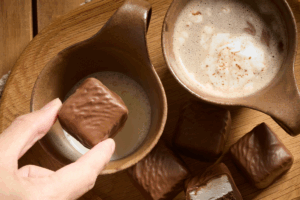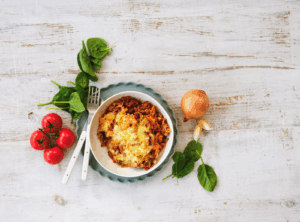WORDS: Julia Leon, Nutritionist (BHSc)
Whether you’re dealing with a picky eater and feel the need to disguise their veggies, or you’re simply just looking for ways to boost the nutritional profile in their everyday foods – here are some things you can do to create healthy meals for the little ones in your family.
-
Mix veggies into their favourite pasta sauce
This is one of the easiest ways to add in some extra nutrients in times of need. Opting for veggies that are full of flavour (yet can be disguised easily) is a great option for children, particularly if they are going through an “I don’t like vegetables” stage. Try mixing carrot, mushrooms, garlic, onion and broccoli into your bolognese sauce and swap regular wheat pasta for legume pasta every now and then for an extra hit of protein and fibre. If your child is a cluey toddler who will notice any ‘green bits’, try blending your veggies up in the sauce.
-
Boost their breakfast
We often forget about breakfast as an opportunity to get more nutrients in your child’s diet, but truth is, there are so many ways you can incorporate more into their morning meal! Not only does this help set them up for the day ahead, it also takes a bit of the pressure off if the remaining meals don’t go to plan. Try grating carrot or zucchini into their morning oats (to provide a sweet flavour without changing the texture too much) or mix an egg through their porridge for a super creamy consistency and a good dose of healthy fats and protein. If your child only eats cereal, add toppings such as chia seeds (call them sprinkles) and top with cinnamon and peanut butter to help stabilise blood sugar levels and avoid an energy slump.
-
Try a savoury muffin
The options with savoury muffins are endless – choose veggies you know your child will eat to help them meet their daily quota. Try combinations such as spinach, feta, capsicum, peas, corn and mushrooms. Most savoury muffin recipes include egg which again is a good source of healthy fats and protein. Alternatively, the combination of flaxseed meal and water is a great vegan option which replaces egg as a binder (you can also replace feta with tofu). Savoury muffins also freeze well and are a great on-the-go snack, lunch for a baby who is getting a handle on solids or a healthy addition to school lunchboxes.
-
Enjoy a healthy smoothie
One of the best things about smoothies is that you can include a wide variety of fruits, vegetables, complex carbohydrate and protein sources to create a well-rounded meal or snack option – and of course tweak it accordingly to ensure it passes your child’s very strict taste testing criteria!
Frozen bananas or cauliflower (yep!) are always great to have on hand for smoothies – they make for the perfect smoothie base thanks to their texture and the cauliflower is almost unrecognisable when mixed with other ingredients.
Antioxidant-rich berries and spinach leaves are another favourite – again, your child won’t even notice the ‘green’! Don’t forget your fibre in the form of flaxseeds or chia seeds and protein from your milk of choice along with a dollop of nut butter and a little honey for taste.
For an extra dose of antioxidants and protein, try adding an easy-scoop powder like the Lifestream Bioactive Spirulina Powder which also works to support energy and overall wellbeing.
-
Sneak in a sweet treat
Is there anything sneakier than including veggies in their favourite sweet treats? Not even your clever little toddler will see this one coming! Try things like avocado chocolate mousse or beetroot, carrot and zucchini mixed into your chocolate brownie mixes. Bonus points if they contain no refined sugar and are made with antioxidant-rich cacao powder for a hit of magnesium.
If your child loves yoghurt, try boosting the nutrient profile with fresh fruit instead of store-bought flavoured yoghurts which are often packed with sugar. You can try mixing through passionfruit pulp, a little Manuka honey or homemade chia jam for natural sweetness instead.
Homemade banana pancakes are another great option which can be enjoyed at breakfast or snack time. Some powders, such as the Lifestream Bioactive Spirulina Powder are also great for baking, so you can add this to both your desserts and muffins for an extra nutrient boost.
Foods in their original form
Although sneaking certain nutrients in from time to time can be a good way to ensure your child is getting what they need to thrive, it’s also important to continue to expose them to certain foods in their original form – this helps create longer term healthy habits. Research shows that it can take up to twenty instances of exposure for a child to accept or like a new food, so the idea here is to keep on offering!
Exposure is key
- Get them involved in the kitchen
- Talk about different foods when shopping at the supermarket
- Share mealtimes where possible to model behaviour
- Try not to refer to any foods as ‘good’ or ‘bad’
Dinner time hack
Try offering a veggie snack plate before dinner in a no-pressure environment. Having a variety of veggies with different colours and textures will encourage them to explore what’s on their plate (and with nothing else being offered at the same time, you might be pleasantly surprised on what they actually will eat!)
Try not to overload the plate either as this can be overwhelming. Opt for foods such as cucumber, carrot or capsicum sticks (with protein-rich hummus for dipping) avocado, olives and cheese as a dinner starter.






